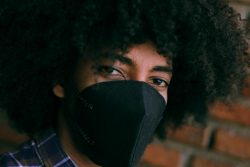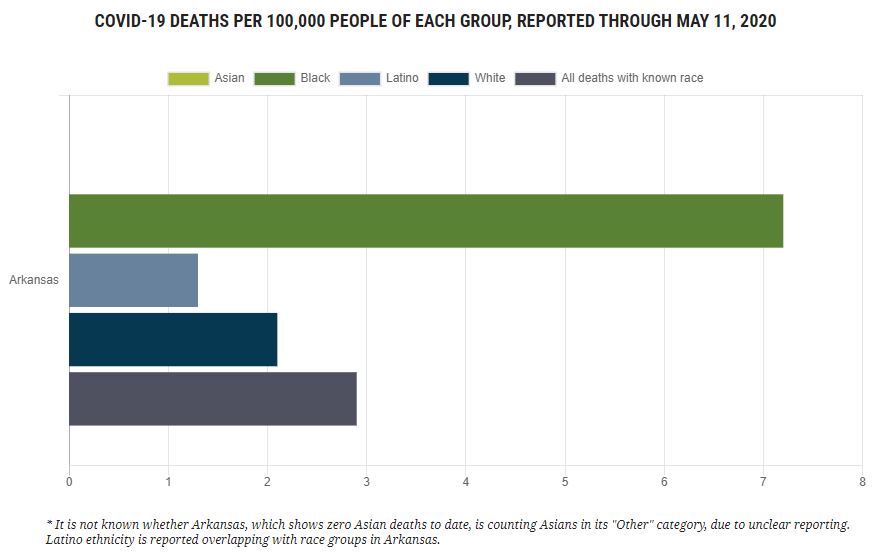
“When America catches a cold, Black folks catch the flu.” This is a saying many Black people grow up hearing. It means that when America as a whole is in a slump, Black communities tend to suffer more – due to structural, economic and policy factors out of their control. As we look at 2020, we can say that when America catches coronavirus, people of color die. Sadly, across the country, much of the data reveals that people of color are contracting and dying of the disease at disproportionate rates.
Black Arkansans are three times more likely to die of the virus than Whites: For every 100,000 White Arkansans, 2.1 have died a COVID-19 related death; for every 100,000 Black Arkansans, the rate is 7.1.
Many long-standing disparities between communities of color and Whites, such as limited access to health care, income and wealth inequity, and other structural inequities are a few reasons why experts believe people of color are at a higher risk from COVID-19.
Pre-existing conditions like diabetes, heart disease, high blood pressure, and other chronic illnesses increase the likelihood of contracting and dying from the virus. Also, racism faced in the healthcare system often leads to under-diagnosis and under-treatment for people of color.
Black and Brown people are also much more likely to work “essential” jobs that require their physical presence. This obviously places them at a higher risk of coming in contact with the virus, as opposed to people who can remain isolated in their homes to work. The Economic Policy Center found that the Latinx community has the lowest proportion of workers who are able to telework (16.2 percent, compared to 19.7 percent for Black Americans, 30 percent for White Americans, and 37 percent for Asian Americans).
Inequitable policies that created racial housing segregation have meant that low-income people of color are much more likely to live in areas of concentrated poverty than low-income Whites. According to a report by the Bread for Life Institute, poverty rates in such areas can be as high as 40 percent (or more) and lead to crowded conditions that make it nearly impossible to maintain the recommended social distance during the pandemic. Social distancing is actually a privilege – one that many people around the country simply don’t have access to.
The coronavirus pandemic has put under a microscope the longstanding disparities people face based on race. It is beyond time for our federal and state leaders to implement legislative priorities that close the racial gaps in health care access, income and other areas that prevent people of color from truly living healthy, equitable lives. Keep an eye on our COVID-19 coverage to stay updated on the federal and state policy responses.
Read how the coronavirus pandemic is hitting Arkansas’s Pacific Islander communities hard.

